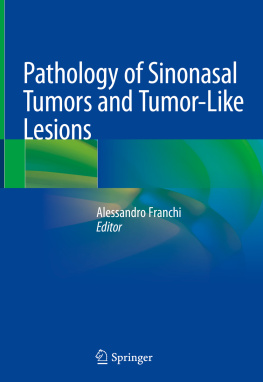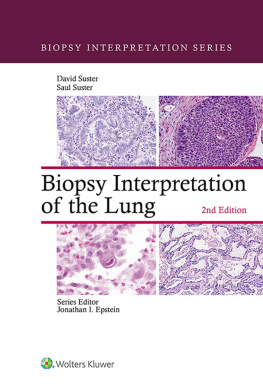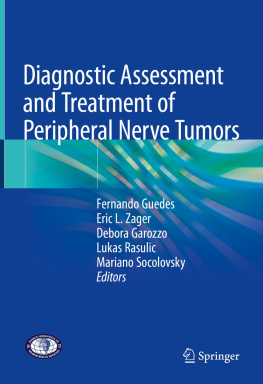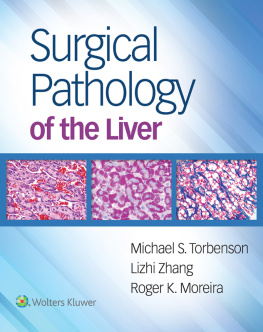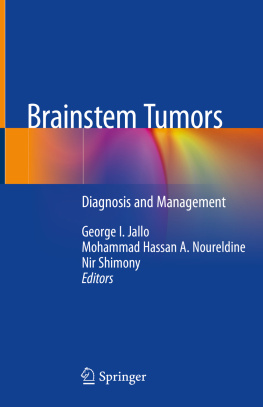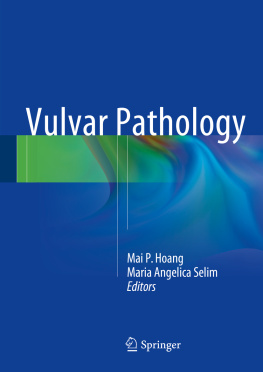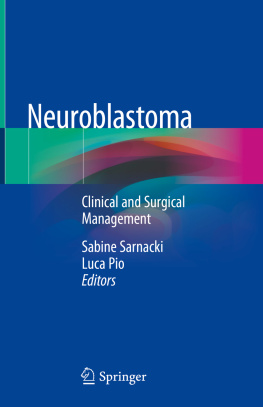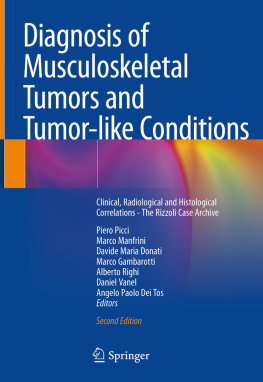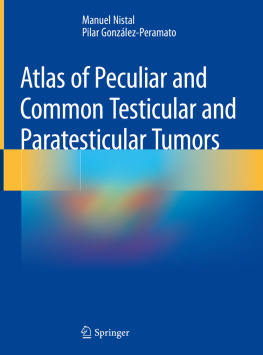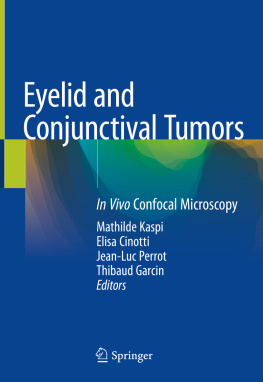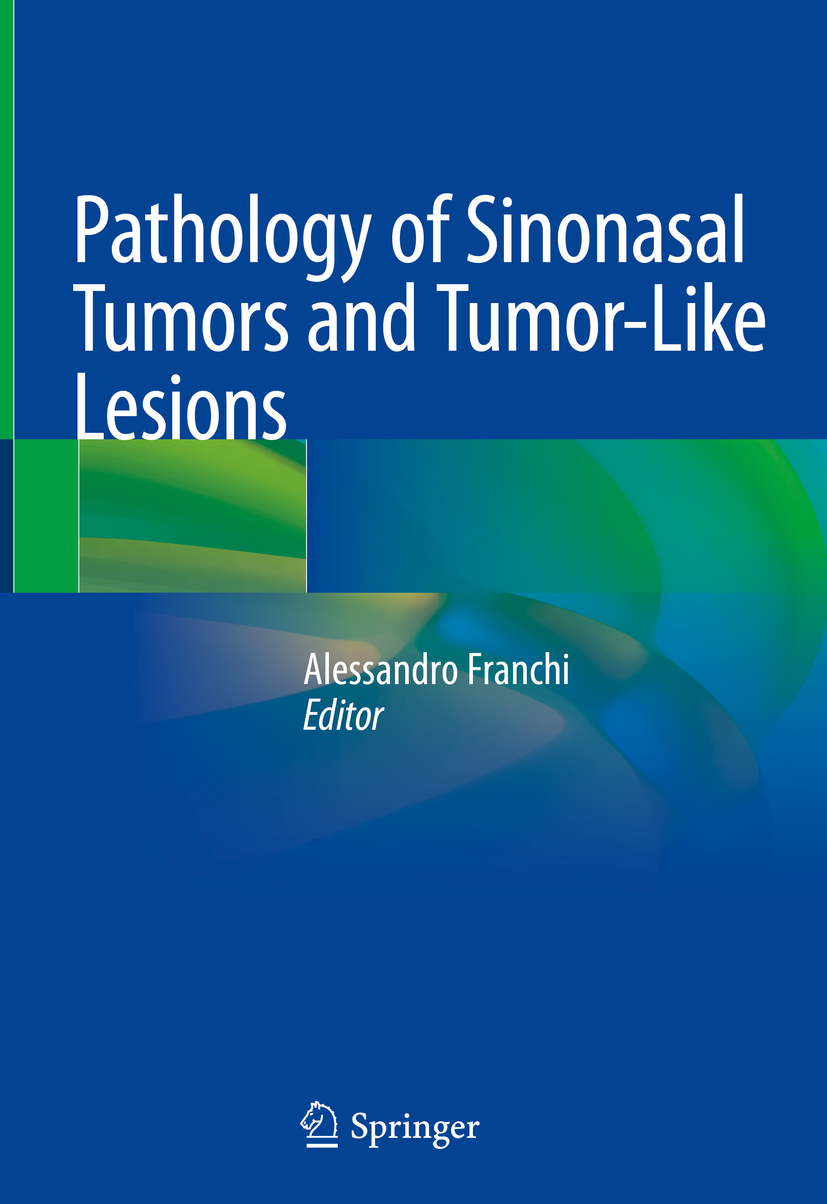Editor
Alessandro Franchi
Pathology of Sinonasal Tumors and Tumor-Like Lesions
Editor
Alessandro Franchi
Department of Translational Research and of New Technologies in Medicine and Surgery, University of Pisa, Pisa, Italy
ISBN 978-3-030-29847-0 e-ISBN 978-3-030-29848-7
https://doi.org/10.1007/978-3-030-29848-7
Springer Nature Switzerland AG 2020
This work is subject to copyright. All rights are reserved by the Publisher, whether the whole or part of the material is concerned, specifically the rights of translation, reprinting, reuse of illustrations, recitation, broadcasting, reproduction on microfilms or in any other physical way, and transmission or information storage and retrieval, electronic adaptation, computer software, or by similar or dissimilar methodology now known or hereafter developed.
The use of general descriptive names, registered names, trademarks, service marks, etc. in this publication does not imply, even in the absence of a specific statement, that such names are exempt from the relevant protective laws and regulations and therefore free for general use.
The publisher, the authors, and the editors are safe to assume that the advice and information in this book are believed to be true and accurate at the date of publication. Neither the publisher nor the authors or the editors give a warranty, expressed or implied, with respect to the material contained herein or for any errors or omissions that may have been made. The publisher remains neutral with regard to jurisdictional claims in published maps and institutional affiliations.
This Springer imprint is published by the registered company Springer Nature Switzerland AG
The registered company address is: Gewerbestrasse 11, 6330 Cham, Switzerland
Contents
Part IGeneral Features
Lucia Miligi , Carlotta Buzzoni and Sara Piro
Mario A. Hermsen , C. Riobello , R. Garca-Marn , V. N. Cabal , L. Surez-Fernndez , F. Lpez and J. L. Llorente
Giandomenico Maggiore , Maria Silvia Lazio and Oreste Gallo
Ester Orlandi , Domenico Romanello , Donata Galbiati and Lisa Licitra
Part IISinonasal Tumor-Like Lesions
Alessandro Franchi
Part IIISinonasal Tumors
Alessandro Franchi
Alessandro Franchi
Alessandro Franchi
Alessandro Franchi
Alessandro Franchi
Alessandro Franchi
Introduction
Sinonasal cancers (SNCs) represent less than the 0.2% of all malignant cancers yearly diagnosed in the world []. Despite this low frequency, a great variety of histological types may be found, and the most frequent are keratinising squamous cell carcinoma (SCC) , adenocarcinomas (AD) , cylindrical cell ( non-keratinising ) carcinoma , undifferentiated carcinoma , lymphoma , melanoma and olfactory neuroblastoma .
SNCs may be classified as rare cancer , but the low absolute risk in the general population effectively contrasts with the high relative risks for specific chemical exposures and occupational settings. SNCs are indeed considered rare cancers with high occupational attributable fraction (AF: 2043%) []. In this chapter, we review the current knowledge on epidemiological aspects of SNC.
Incidence, Mortality and Survival
Incidence
SNCs represent less than the 0.2% of all malignant cancers yearly diagnosed in the world. The incidence rates are around 1/100,000 inhabitants, as reported in the publication Cancer Incidence in Five Continents-Volume XI, a report published approximately every 5 years by the International Agency for Research on Cancer and the International Association of Cancer Registries, which provides comparable high-quality statistics on the incidence of cancer from cancer registries around the world []; in volume XI, the period 20082012 is analysed.
The annual number of new cases is available where population-based cancer registries exist, with some approximation, because current statistics are by site and the three-digit ICD-O-3 codes C30C31 (cancers of the nasal cavity , middle ear and paranasal sinuses) encompass middle ear cancers too []. The percentage distribution of cancers across subsites of the sinonasal region is different in different geographic areas. Generally, the subsite middle ear is the less represented (e.g. in males it accounts for less than 3% of cases in the USA). Nevertheless, when descriptive epidemiology of cancers of the SNC are presented, current statistics must be interpreted considering that the ICD-O-3 codes for SNC take into account also middle ear.
SNCs may be classified as rare cancer: according to the European Parliament and Council of the European communities, rare diseases are defined as those with a prevalence of <50 per 100,000 [] and proposed a new definition of rarity for cancers and a list of rare cancers in Europe.
The low frequencies of rare cancers, and the consequent limited medical expertise on the matter, create specific problems in clinical decision making, clinical research and healthcare organisation. In addition, patients and their families are confronted with a wide range of difficulties arising directly from the rarity of the pathologies. Such difficulties may include wrong diagnosis leading to inaccurate treatments, delays in the period between the onset of the first symptoms and the diagnosis, insufficient scientific knowledge and lack of appropriate quality healthcare.
Geographic Differences
In North America, crude incidence rates are about 1.1/100,000 inhabitant among men and 0.6/100,000 among women, with similar values in Asia (about 1.0/100,000 men and 0.6/100,000 women). Rates are slightly higher in Europe (about 1.2/100,000 men and 0.7/100,000 women) and Oceania (about 1.1/100,000 men and 0.6/100,000 women) and lower in Central/South America (about 0.5/100,000 men and 0.3/100,000 women) and Africa (about 0.4/100,000 men and 0.3/100,000 [].
In the period 20082012, the highest incidence age-standardised rates (ASR) per 100,000 inhabitants (standard: world population) have been reported among men in some small registries in Australia (Tasmania: 1.7), Spain (Asturias: 1.7), South America (French Guiana: 1.7), Africa (Zimbabwe, Harare: 1.3), France (Lille, Limousin and Vendee: 1.2), Switzerland (Neuchatel: 1.2) and Thailand (Lopburi: 1.2) [.

